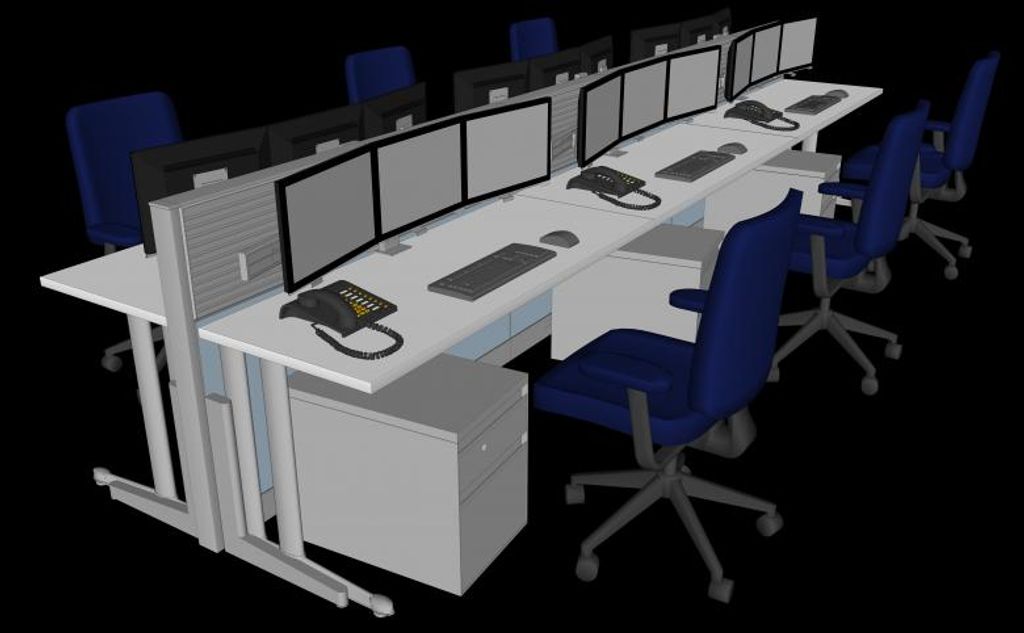
In today's fast-paced work environment, efficient email solutions are essential for office departments to stay organized and maintain effective communication. This article explores various strategies and tools that can help streamline email management and optimize productivity. From choosing the right email client to managing email overload, we will cover key considerations and best practices to enhance your email experience.

When choosing an email client, there are several factors to consider. Compatibility with your operating system and devices is important to ensure that you can access your emails from anywhere. Security is another crucial aspect to consider, as you want to protect your sensitive information from unauthorized access. Additionally, ease of use and a user-friendly interface can greatly enhance your email experience. Lastly, consider the integration capabilities of the email client with other tools and software that you use on a daily basis.
When choosing an email client for your office department, it's important to consider the features and capabilities of different options. Here is a comparison of some popular email clients:
Each email client has its own strengths and weaknesses, so it's important to choose one that aligns with the specific needs of your office department.
Tip: Consider conducting a trial period with different email clients to determine which one works best for your team.
When choosing an email client, there are several important features to consider. These features can greatly enhance your email experience and improve your productivity. Here are some key features to look for:
User-friendly interface: A good email client should have an intuitive and easy-to-use interface that allows you to navigate and manage your emails efficiently.
Advanced search capabilities: The ability to search for specific emails or attachments quickly and accurately is essential for finding important information.
Customizable filters: Having the ability to create custom filters allows you to automatically organize incoming emails and prioritize them based on your preferences.
Integration with other tools: Look for an email client that integrates seamlessly with other productivity tools such as calendars, task managers, and note-taking apps.
Security features: Ensure that the email client you choose has robust security measures in place to protect your sensitive information.

Creating folders and labels is an essential step in organizing your emails effectively. By categorizing your emails into different folders and assigning labels, you can easily locate and manage specific types of emails. This not only helps in reducing clutter in your inbox but also improves your overall email management workflow.
Filters and rules are powerful tools that can help you manage your email inbox more efficiently. By setting up filters and rules, you can automatically categorize and organize incoming emails based on specific criteria. This can save you time and ensure that important emails are prioritized and easily accessible. Here are some tips for using filters and rules effectively:
Email notifications can be a helpful tool to stay updated on important messages and events. However, they can also become overwhelming and distract you from your work. To manage email notifications effectively, consider the following:
Customize notification settings: Most email clients allow you to customize notification settings, such as choosing which types of emails trigger notifications and setting specific times when notifications are allowed.
Disable non-essential notifications: Disable notifications for non-essential emails, such as newsletters or promotional emails. This will help reduce distractions and keep your focus on important tasks.
Use filters and rules: Set up filters and rules to automatically categorize and prioritize incoming emails. This can help you identify and respond to important emails more efficiently.
Schedule dedicated email-checking time: Instead of constantly checking your email throughout the day, schedule dedicated time to check and respond to emails. This will help you stay focused on other tasks and minimize interruptions.
Tip: Remember to regularly review and adjust your notification settings and email management strategies to ensure they align with your workflow and priorities.

When it comes to writing emails, it's important to keep your message clear and concise. Highlighting the most important keyword can help draw attention to key points. Additionally, using italics can provide subtle emphasis where needed. To present structured, quantitative data, consider using a Markdown table. This can help organize information in a succinct and visually appealing way. For less structured content, such as steps or a series of related items, a bulleted or numbered list can be used. Remember to keep paragraphs short and concise to maintain readability. Finally, here's an important tip: always proofread your emails before sending them to ensure clarity and professionalism.
Email templates are pre-designed email formats that can be used for common types of emails, such as meeting requests, follow-ups, or customer inquiries. They can save time and ensure consistency in communication. By using email templates, you can easily create professional-looking emails without having to start from scratch each time. Additionally, templates can be personalized with recipient-specific information, making them efficient and personalized.
When it comes to email communication, it is important to follow proper etiquette to ensure effective and professional interactions. Here are some tips to keep in mind:
Remember, email is a powerful tool for communication, and practicing good email etiquette can help you build strong professional relationships and avoid misunderstandings.
Tip: Avoid using email for sensitive or confidential information. Instead, opt for more secure communication methods such as encrypted messaging or phone calls.

Achieving inbox zero can be a daunting task, but with the right strategies, it is definitely possible. Here are some tips to help you manage your inbox effectively:
Prioritize your emails: Start by sorting your emails based on their importance. Flag or star the ones that require immediate attention and deal with them first.
Set up filters and rules: Use email filters and rules to automatically categorize and organize incoming emails. This will help you quickly identify and prioritize emails.
Unsubscribe from unnecessary emails: Identify mailing lists and newsletters that you no longer find useful and unsubscribe from them. This will help reduce the clutter in your inbox.
Regularly delete old emails: Mass delete old emails that are no longer relevant. This will help free up space in your inbox and make it easier to find important emails.
Minimize distractions: Avoid getting distracted by junk mail by setting up email notifications to only alert you for important emails. This will help you stay focused and productive.
Remember, achieving inbox zero is an ongoing process. By implementing these strategies, you can effectively manage your emails and maintain a clutter-free inbox.
Unnecessary emails can be a major source of distraction and clutter in your inbox. Here are some strategies to help you deal with them:
Unsubscribe from emails with 1 click: Take the time to go through your inbox and identify any newsletters or promotional emails that you no longer wish to receive. Most email clients offer an easy way to unsubscribe from these emails with just one click.
Identify mailing lists: If you find that you are receiving a lot of emails from mailing lists that you no longer find useful, consider unsubscribing from them. This will help reduce the amount of unnecessary emails you receive.
Unsubscribe from junk: If you frequently receive spam or junk emails, make sure to mark them as spam and unsubscribe from them. This will help keep your inbox clean and free from unwanted emails.
Mass delete old emails: If you have a large number of old emails that are no longer relevant, consider mass deleting them. This will help declutter your inbox and make it easier to find important emails.
Remember, your emails are your business. By taking the time to deal with unnecessary emails, you can improve your productivity and focus on what's important.
Automating email tasks can greatly improve productivity and efficiency. By automating repetitive tasks, such as organizing incoming emails into folders or applying filters, you can save valuable time and reduce manual effort. One way to automate email tasks is by using email client features like rules or filters. These features allow you to set specific conditions for incoming emails and automatically perform actions based on those conditions. For example, you can create a rule to automatically move emails from a specific sender to a designated folder. Another way to automate email tasks is by using third-party tools or plugins. These tools can provide additional functionalities and integrations with other applications, allowing you to streamline your email workflow even further.
In conclusion, implementing efficient email solutions in office departments can greatly improve productivity and communication. By utilizing advanced email management tools and implementing effective email policies, organizations can streamline their email processes and reduce the time spent on email-related tasks. Additionally, integrating email with other collaboration tools and utilizing automation features can further enhance efficiency. It is important for organizations to prioritize email management and provide training and support to employees to ensure successful implementation. With the right strategies in place, office departments can experience smoother workflows and improved overall performance.
When choosing an email client, consider factors such as compatibility with your operating system, user interface, features, and security options.
Some popular email clients include Microsoft Outlook, Gmail, Apple Mail, Thunderbird, and Yahoo Mail.
Some important features to look for in an email client include a user-friendly interface, efficient search functionality, strong spam filtering, integration with other productivity tools, and mobile accessibility.
You can organize your emails effectively by creating folders or labels to categorize different types of emails, using filters and rules to automatically sort incoming emails, and managing email notifications to reduce distractions.
Some strategies for achieving Inbox Zero include regularly decluttering your inbox by archiving or deleting unnecessary emails, setting aside dedicated time for email management, and prioritizing and responding to emails promptly.
You can automate email tasks by setting up email filters and rules to automatically sort and categorize incoming emails, using email templates for frequently sent messages, and utilizing email scheduling tools.